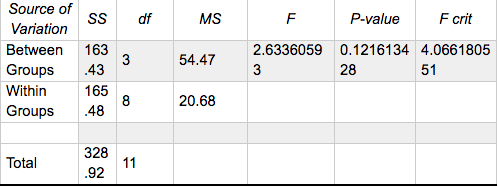
This Mini-Study was first published in September, 2016
By Liza Sarychev and Charles Bausman
Background
We published an article on Firefighter Glove Grip, and identified a chief complaint amongst the firefighting community was grip issues with firefighting gloves, especially during fire overhauls when the gloves are wet.
So we decided to test the grip strength of three major glove brands, Holik, Pro-Tech, and Shelby, to see which gloves performed the best in our grip tests.
Method & Study Design
To determine if one brand of firefighting gloves outperforms another, we compared Holik, Protek, and Shelby between each other and a control (lab rat) who didn’t wear gloves throughout the testing.
We chose four study subjects that fit size L gloves according to the sizing chart of the manufactures.

Prior to testing, the gloves were submersed in water for 15 minutes, and the four study subjects had their right and left hand grip tested with a hand dynamometer.
Next, three of the study subjects donned a pair of gloves, and all four conducted a two rounds of a grip intensive gym based circuit whose exercises closely modeled those conducted during actual fire overhauls.
Below are the circuit details and here is a video of the study subjects completing one circuit:
2 Rounds
- 45 second Farmers Carry/Walk @ 24kg Kettlebells
- 10 seconds to rotate to next exercise
- 45 second Sledge Hammer lateral rubber block strikes
- 10 seconds to rotate to next exercise
- 45 second Standing Vertical Kettlebell Rope Pull @ 12kg
- 10 seconds to rotate to next exercise
- 45 second Fast-rope sandbag pull
- 10 seconds to rotate to next exercise
Post activity, we again measured the right and left hand grip strength of the study subjects with a hand dynamometer.
Left and right hand force measurements were averaged and we subtracted grip force before activity from grip force after activity.
This same procedure was conducted a total of three times, on successive days. Each day, the study subjects wore a different pair of gloves, and the control subject conducted the circuit without gloves.
Results and Takeaways
The chart below summarizes the results.
Negative values indicate a decrease in grip strength post activity.

Below are the average differences in grip for each glove:

As expected, the control had the least decrease (actually an increase) in grip strength. In our test, Protek performed best, followed by Holik and Shelby respectively.
But are these results statistically significant? We ran ANOVA statistical analysis on the results and found the following:

It is important to note the high P-value. Our P value states that if the experiment was to be repeated, there is a 21% chance that we will get a greater difference between the gloves. Due to this percentage being very high compared to our threshold of 5%, statistically there isn’t enough evidence to concretely conclude that different gloves make a difference in grip strength.
Another important value to look at is the F value. A large F value indicates more difference between groups than within the groups. For F = 1, there would be no difference between the different gloves. Since our F = 2.63, there is only a slight difference in grip strength between groups.
These values show that our results are weak, but not meaningless.
Remaining Questions
I would be inclined to repeat this test again with more trials since ANOVA analysis gets more accurate as of the number of data points increases.
This test only looked at the grip fatigue due to these three gloves. We did not test them for thermal insulation, fit, or other aspects that would be important to firefighters.
Questions? Email coach@mtntactical.com
Comments? Please enter your comment below.
You might also like: Mini Study – Comparing SCBA Emergency Breathing Techniques
STAY UPDATED
Sign-up for our BETA newsletter. Training tips, research updates, videos and articles - and we’ll never sell your info.
